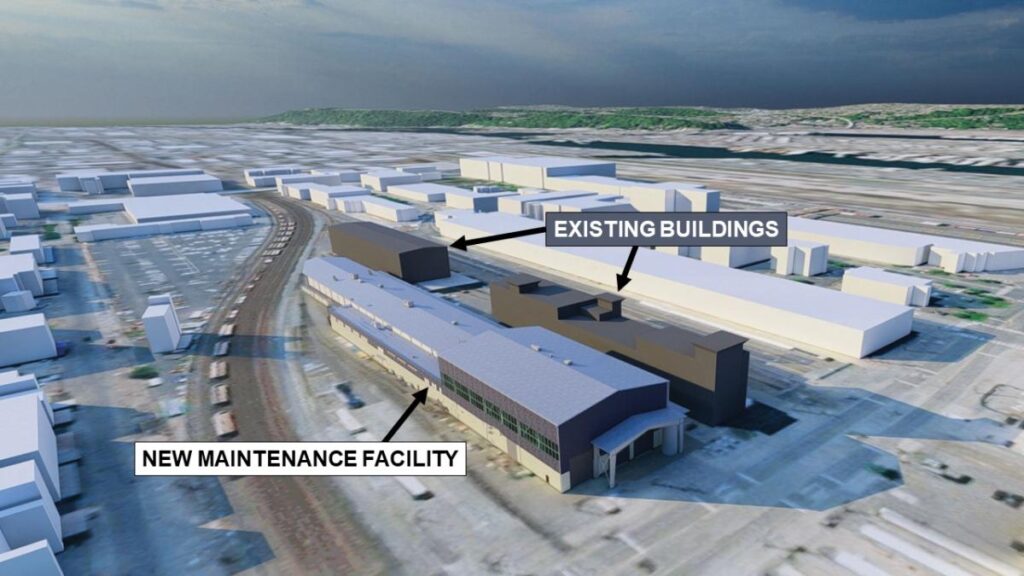Photo courtesy of Amtrak
Major improvements are planned for Amtrak’s rail yard in Seattle, Wash.
Amtrak will soon begin major rail yard upgrades in Seattle, Wash., following the award of a construction contract to PCL Construction Services Inc.
The project advances the company’s New Era of Rail and supports passenger rail growth as ridership continues to break records around the country, including in the Pacific Northwest.
PCL Construction Services, which maintains its United States headquarters in Denver, Colo., will lead the design and construction, managed by the facilities team within Amtrak’s Capital Delivery department.
The new maintenance facility and rail yard improvements will support the existing fleet and prepare for future trains.
The overall project investment is nearly $300 million, funded by the Infrastructure Investment & Jobs Act (IIJA).
The upgraded King Street Yard will enable modern, more efficient maintenance practices and support the introduction of new Amtrak Airo trains set to enter service in 2026 for the Amtrak Cascades route, along with maintenance for trains on the long-distance routes that operate out of the yard.
When the project is completed, the rail yard will feature a new two-bay maintenance and inspection facility and a new service and cleaning bay to provide the foundations for a world-class maintenance yard.
“We look forward to breaking ground soon on this important project that will modernize maintenance and upgrade the overall customer experience,” Amtrak Executive Vice President, Capital Delivery Laura Mason said.
Additional improvements include relocating existing facilities, upgrading utilities and adding space to store train maintenance materials. Regular service will be maintained throughout the project, with completion expected in 2027.
The work will be completed within the rail yard’s existing footprint, south of the Stadium District in Seattle.
In alignment with Amtrak’s Net-Zero Strategy, the new facility will operate without using fossil fuels for heating, allowing Amtrak to take advantage of the region’s available renewable electricity. Amtrak, already one of the most sustainable ways to travel, has announced a Net-Zero Strategy which targets sourcing 100 percent carbon-free electricity by 2030 and achieving net-zero emissions by 2045.
“We’re finally addressing long-standing rail needs, advancing major projects, and upgrading vital infrastructure across the country, including Amtrak stations and facilities like the King Street Coach Yard, FRA Administrator Amit Bose said. “The new Seattle facility and rail yard will benefit riders on several Amtrak routes, including Amtrak’s Cascades route, and upgrades will ensure it is positioned for future growth.”
Amtrak’s King Street Coach Yard is located approximately 1 mi. south of King Street Station and experiences more than 200 daily train movements. It will be home to the first Amtrak Airo trains to enter service in 2026, featuring a design and modern amenities that will transform the travel experience.
At the Seattle Rail Yard, Amtrak employees maintain, service and clean the locomotives and passenger railcars that operate on Amtrak Cascades — daily Pacific Northwest trips between British Columbia, Washington and Oregon; Coast Starlight — daily connections between Los Angeles and Seattle; and Empire Builder — daily connections between Chicago and the Pacific Northwest.
Amtrak also maintains Sounder commuter trains at the rail yard. This Sound Transit service operates between Everett, Seattle and Lakewood, with additional stops in between.
The overall project investment is nearly $300 million, funded by the IIJA.
“It’s great to see more federal dollars from our bipartisan infrastructure bill coming back to Washington state to build and upgrade crucial transportation infrastructure that our families rely on, like the King Street Yard,” U.S. Sen. Patty Murray (D-WA) said. “Seattle has always been a world-class destination, and these upgrades will make it easier than ever for more people up and down the West Coast to travel to Seattle, as well as across our state, to see just how much Washington has to offer.”
Read the full article here

